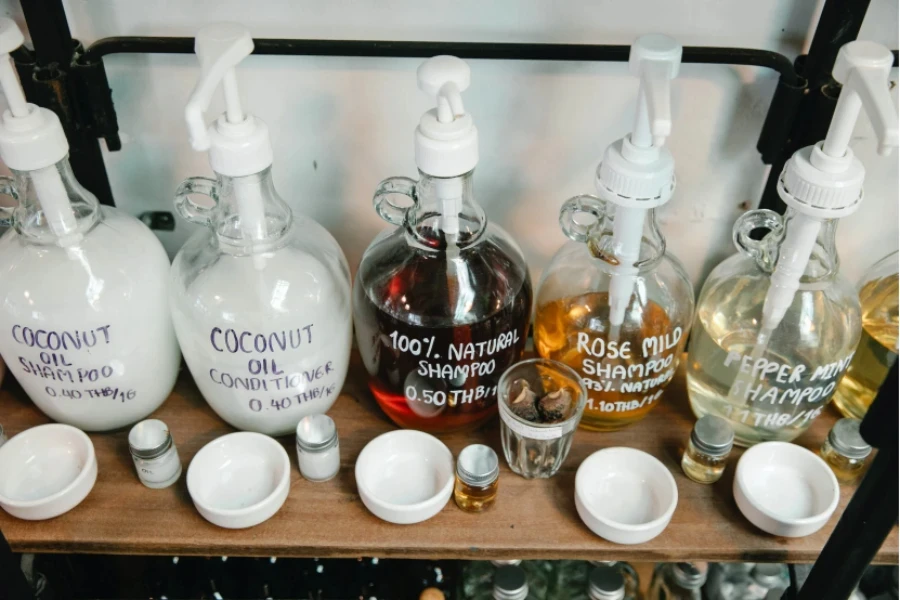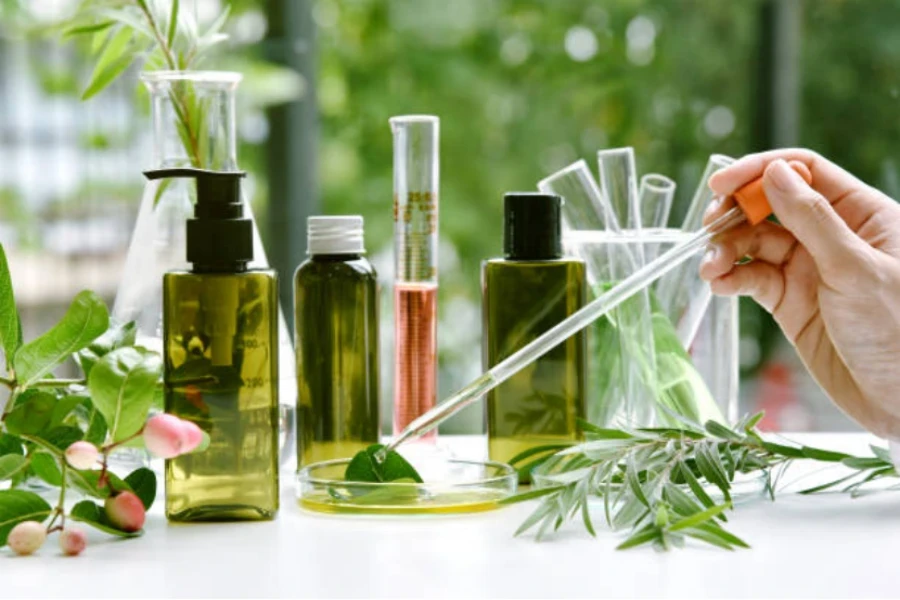The annual ingredients and formulations event in Seoul has wrapped up. As always, it provided a glimpse into the innovations that will shape the future of cosmetics. Attendees were able to explore the latest ingredient technologies and product concepts. Exhibitors spanned global suppliers wanting to break into new markets. The trends spotted at the show signal opportunities for brands looking to meet evolving consumer demands. At the same time, they highlight areas where more work needs to be done to improve the sustainability and responsibility of the beauty industry. This report summarizes five key trends that forward-thinking brands should have on their radar.
Table of Contents
Skin recovery solutions: New frontier for sensitive skin
Gentle alt actives meet global compliance
Microbiome-conscious ingredients expand
Functional textures add joy to routines
Phyto-mucins offer vegan snail mucin alternative
Final thoughts
Skin recovery solutions: New frontier for sensitive skin

One prominent theme was ingredients that help skin heal and renew itself. The new frontier is finding solutions that activate recovery at the cellular level.
Some ingredients are being positioned as almost pharmaceutical-grade for how they promote skin’s innate healing processes. For example, an ingredient derived using biomedical tissue engineering techniques typically used for wound healing. Other ingredients home in on the root causes that inhibit skin cell renewal. One extract showcased can regulate cortisol production to enable faster turnover.
Beyond acne and abrasions, innovations help skin rebound from other stressors. A treatment with yeast extract and ceramides repairs sun damage and soothes inflammation. The potential also exists to speed recovery from aesthetic procedures, razor irritation, and chafing.
The focus is shifting from just protecting and hydrating skin to giving it the nutrients it needs to renew itself. Brands recognizing this emerging consumer need will gain an edge. Those who can leverage biotech and identify plant actives that provide results without irritation will lead the way.
Gentle alt actives meet global compliance

Another trend was alternative ingredients that provide results without the irritation that some active ingredients can cause.
For example, extracts from starfish are emerging as an alternative to retinol. Brands position these as “retinol-mimicking” while being suitable for sensitive skin.
There are also novel “skin boosters” on the rise. These enhance the effectiveness of active ingredients already in a formula. This allows brands to maintain results while lowering the required dosage.
To convince consumers to make the swap, sustainability is key. When sourcing from marine life, renewable methods are a must. One supplier returns starfish to the ocean after extracting coelomic fluid. They monitor the ecosystem to prevent overharvesting.
It’s a win-win-win – consumers get gentler products that work, brands can create formulas that are compliant across global markets, and less stress is put on scarce natural resources.
Microbiome-conscious ingredients expand

The microbiome remains one of the hottest topics in cosmetics. Brands at the show presented the next generation of skin-balancing prebiotics, probiotics, and postbiotics.
Innovation is happening on two fronts. First, more diverse strains of bacteria are being utilized. One company highlighted a humus extract with over 600 inactive microbe species. Another trending microbe is ectoin, which enhances skin’s natural protective barriers.
Second, microbiome solutions are expanding into new product categories. We’ve seen the boom in probiotic skincare. Now brands are exploring areas like scalp and body care, acne treatments, odor-controlling deodorants, and SPF. One concept even applies prebiotics to feminine care.
The surface has just been scratched in terms of how cosmetics can harness the power of good bacteria. Brands looking to differentiate in crowded markets would do well to examine how microbiome science can solve specific consumer needs. And identify white space opportunities where this approach hasn’t yet been applied.
Functional textures add joy to routines

Texture innovation is making routines more enjoyable while boosting product performance.
New textures provide better delivery of active ingredients. Some use encapsulation methods like liposomes or crystal structures to stabilize volatile compounds. These help potent ingredients remain fresh and effective for longer once applied.
But textures aren’t just about function. Many brands took inspiration from food to add a whimsical feel. Think icy, melt-in-your-hand creams that morph into an oil. Bouncy caviar-like capsules that burst upon application. Cleansing balms in tropical fruit shapes that transform into a sorbet-textured oil.
Besides being inherently fun to use, these innovations align with younger generations who see beauty as part of self-care. Brands that can make routines feel less like a chore and more like something to enjoy have an opportunity to connect. Tapping into food trends and nostalgic flavors is an easy way to spark joy.
Phyto-mucins offer vegan snail mucin alternative

Lastly, natural plant-derived ingredients are offering sustainable alternatives to animal-based compounds.
For example, mucins from marine algae and vegetables provide similar skin benefits to snail mucin. These natural polymers offer intense hydration, skin recovery, and a silky texture.
Other plant mucilages come from okra, cactus, and root vegetables. Fermented soybeans yield a sticky substance that helps bind moisture. Even byproducts like guar bean gum, often discarded as waste, can create vegan alternatives.
Sourcing of these ingredients must be ethical and eco-friendly. Overharvesting wild sources is a risk. Brands can partner with crop growers to utilize excess materials. Upcycling food industry waste into useful cosmetic ingredients keeps materials in circulation.
Consumers get high-performing products free from animal cruelty concerns. More of nature’s bounty stays in the ecosystem. Using otherwise discardedScraps promotes sustainability. It’s a winning formula for both people and the planet.
Final thoughts
The annual ingredients showcase provided a glimpse into the future of cosmetics. While trends come and go, some key themes around sensitivity, microbiomes, joy, and ethics are likely here to stay.
Brands would do well to formulate products through the lens of healing sensitive skin. Harnessing good bacteria for targeted benefits has plenty of untapped potential. Small sensory touches make routines delightful versus dutiful. And sustainable sourcing ensures natural ingredient supplies don’t run dry. The passion is there to create next generation cosmetics that are gentle, effective, sustainable and make people smile.




